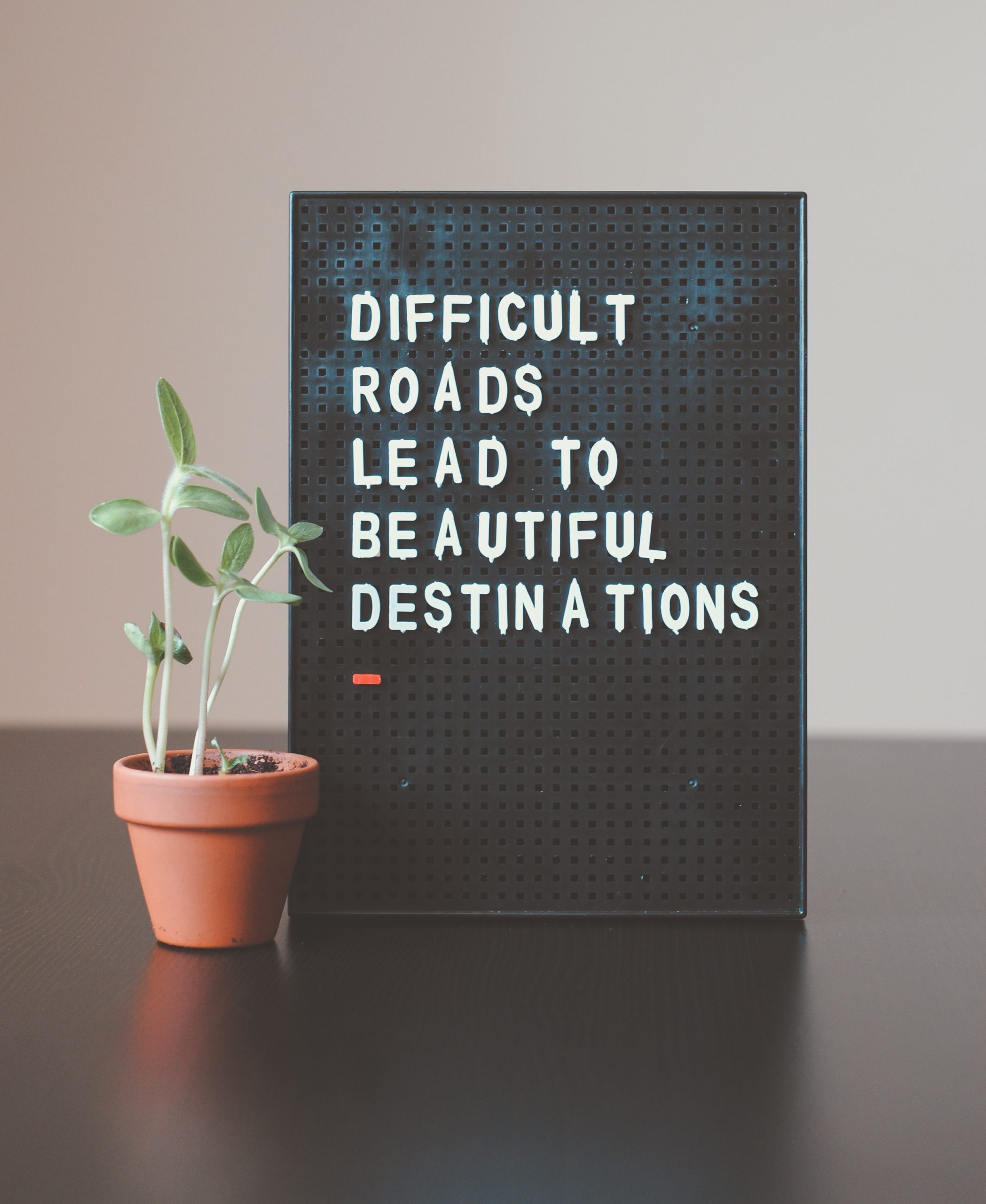The term “strategy” is used to discuss many varied aspects of business development. This post, in particular, focuses on the strategic advantage of taking situations we feel are setbacks or obstacles and turning them into breakthroughs that enhance our personal and/or professional lives. In other words, how can we strategically transform a situation we view as negative into something that produces positive results?
I was thinking about the recent “she-cession” and how it revealed a unique paradox for the female workforce. Professionals, in general, often feel averse to the idea of taking time for themselves to focus on their personal health and healing. These professionals prefer to navigate around obstacles by pushing themselves to work harder instead of smarter. Yet, research shows that slowing down to achieve a “better balance between professional and personal priorities” is precisely what’s necessary to continue moving forward in the face of adversity.
According to a London study, approximately 30% of males and 50% females “between 30 and 50 years old, with at least one dependent child, and in either middle or senior management roles” report consciously resisting long work hours and describe “a variety of strategies they developed for maintaining a healthier work-life balance.”
Those who know me, know I advocate work/life integration as balance is never truly attained but to follow the language used in the study, I will use balance for this post.
Yet, the “she-cession” brought to light the trouble with this scenario. Although both women and men are faced with the issue of developing a healthy work-life balance, women are more likely to work toward a healthy solution, and “those moves stigmatize women and derail their careers.” In the end, too many men hinder their home lives by neglecting their individual and familial needs, and too many women hurt their careers by making the healthy choice to live a balanced life.
What if, instead of women sacrificing their own care and well-being, all professionals — regardless of gender — acknowledge their personal needs and stand up for their right to take time for themselves and for their families? I have to believe this would not only increase the happiness levels of families across the United States, but it would alleviate the untrue stigma that women are less efficient workers than men because they value a healthy work-life balance.
Though I don’t have a specific pattern or process to offer you, as the solution for how to create a well-balanced life will differ for everyone, I do want to share how I put this strategy of turning obstacles into opportunities to work for me over the past two years…
The setback: A global pandemic
I was in New York City the week before the COVID-19 lockdown began. Everyone knew something was coming, and it felt like we were trying to get out of the ocean before a massive wave inevitably came crashing down. A couple of days after my return, the city was shut down. I held my breath over the next couple of weeks, not knowing how long people would be at risk of contracting COVID-19.
Although I was healthy, I chose to shut down my office immediately. Coincidentally, that same week, a member of my team gave birth and, as a result, was out of commission. I was losing contact with my team. I couldn’t see my family. By now, most of the world can relate to that.
From a business perspective, even though our clients have always been spread out across the United States and Canada, we were struggling to work together and support one another while also trying to understand what exactly was happening. Many people were happy to work from home. (I too love the occasional work from home in my PJs day!) However, the reality is, you depend on your team. It’s comforting to be able to look up from your desk to see people and talk to them right then and there, and it really is a jarring situation to be remote from them.
What could I do to resolve this sense of loss that my business, and I personally, were experiencing? One team member was on maternity leave, and the rest of us were working remotely since it didn’t feel safe for us to go into the office. At first, I chose to still go to the office once per week, even though everyone else couldn’t be there. This kept my creative juices flowing and helped me adjust to an altered way of life. I realized that I could still be connected to the office even if I couldn’t be directly connected to the rest of my team, and it served as a reminder that we would be back there eventually. I embraced my environment and the memories it revived to feel more connected to the people I was missing.
Most importantly, I considered the ways in which this obstacle could also be an opportunity. On the one hand, it is difficult to determine your own schedule and be just as productive in those blocks of time as you are when doing your work across from someone else. On the other hand, when you work with other people, your schedule often depends on them. In my situation, since my children are already grown and living in their respective homes, I had the opportunity to create my own private workspace. This proved to be a breakthrough in many ways!

Research shows that, for the average person, it takes approximately 23 minutes and 15 seconds to regain focus after their train of thought is interrupted. Not only could I rid myself of most of the daily distractions caused by other people, but I could create a new routine that enabled me to be more productive. For example, after my first cup of coffee, I receive a bolt of energy that is usually designated toward showering, dressing, packing a lunch and driving to the office. Now, I could begin work almost immediately, focusing my morning energy on the things that were most important for my business.
I started writing down how I wanted to restructure my time and freed myself to work more in line with my natural rhythm. I wasn’t sneaking in sips of coffee while hurrying to get ready; I was (carefully) enjoying my beverage while working on my laptop! I wasn’t stuck in traffic driving to work; I was writing and creating content. Mornings ended up being my most productive time of the day, and not being subjected to the typical weekday interruptions was a huge silver lining.
Today, I still prefer to be at work with my team, but I learned valuable lessons from working at home that I carry with me as I move forward. We should all have flexible schedules. There is no need for me to be at the office by 9 a.m. unless there is a client meeting at that time. There is no need for my team members to stay at work until 5 p.m. unless they too have important business that needs to be conducted in the office.
We should pride ourselves on having flexible schedules — not on being in the office at the same times as everyone else. Being home lets us ask ourselves, “What is a better way for me to work that fits in with my day, priorities and rhythm?”
Another thing I worried about after the pandemic started was how I would be able to stay on top of what everyone else was doing, from a support and supervision standpoint. I thought, “How can people get my feedback or ask for my opinion if we are not together?” Then, I asked myself, “Can I really pour into my team what makes them so special? I hired each of them for a reason. Would I have hired them still if I knew they would approach every little task in the exact same way that I would?”
I am not a micromanager, and as long as I remain informed as to what is going on, allowing my team the freedom to be themselves is actually what is best for my business. Those who needed help knew they were welcome to ask, and those with an innate sense of direction took the wheel and drove smoothly to their destinations.

The last thing that really blew my mind was, all of a sudden, I had lots of time opening up. In instances when I would typically be working on tasks and in meetings all day long, I suddenly had a day for which I hadn’t made any appointments. Now, I had the freedom to ask myself, “Do I want to record a new podcast or finish writing my book that has been half written for almost a year now?” For me, this new reality felt quite baffling. How did I not have this time before?! What did I usually do to fill up this space?
My life used to feel hectic. I can’t say I was always hustling, but there were certainly weeks when I felt like my weekdays provided extremely limited time for my personal projects. You know — those weeks when you work from the minute you wake up to the minute you go to sleep. There will inevitably be periods of time when working morning to night is unavoidable, but those weeks should be few and far between.
Previously, I had been working on projects all week, and my day to learn and strategize was on Saturday. I would write down ideas and prioritize them, read a book about business, or have a session with my coach and contemplate how to implement those teachings into my business practices. Now, Monday was my business strategy day, and on Saturday, I would wake up and be able to do personal activities, like read a fiction novel, take my dog for a walk, run errands or clean the house (which feels very therapeutic to me). Opening up time is like slowly releasing a pressure value. I could finally exhale and, suddenly, I felt safe — a feeling I hadn’t experienced in quite a while.
Overall, being in a pandemic lockdown helped me realize two main things:
- Nothing is forever.
- Setbacks can open your eyes to new opportunities and ways of doing things that you hadn’t thought of before.
Create space for yourself to find the silver lining, recognize new opportunities, and turn breakdowns into breakthroughs.
— Lorraine Schuchart

LEAVE A COMMENT
Comments